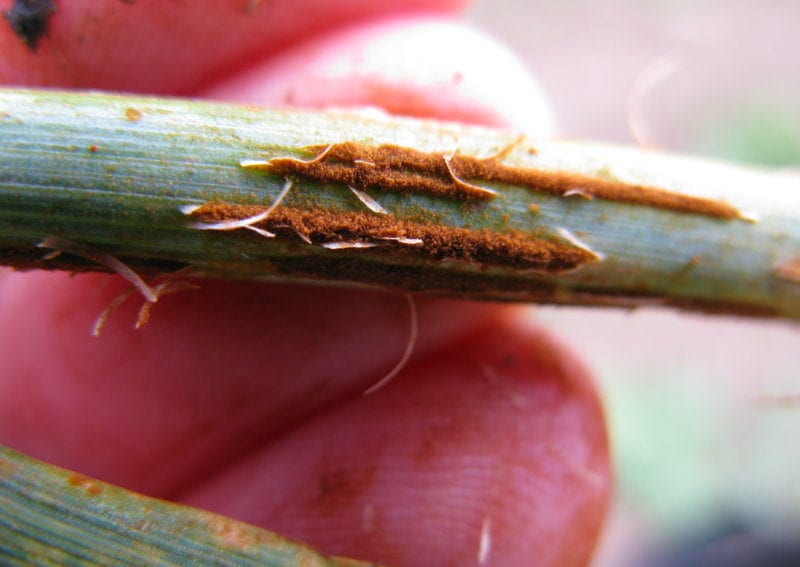By: Maina Waruru
Send to a friend
The details you provide on this page will not be used to send unsolicited email, and will not be sold to a 3rd party. See privacy policy.
[NAIROBI] A strain of a fungus that causes wheat stem rust is devastating the crop in southern Ethiopia and has the potential to spread to other countries in East Africa and the Middle East.
Scientists are racing against time to tame its potentially harmful effects on food security, according to a statement released by the International Maize and Wheat Improvement Center (CIMMYT) last month (26 March).
Researchers at CIMMYT, the Ethiopian Institute of Agricultural Research, the US Department for Agriculture’s Cereals Disease Laboratory and the Global Rust Reference Center in Denmark, say the strain is similar to the one detected in Egypt, Germany and Turkey between 2007 and 2013, but where no impact on production was noticed.
“From spore dispersal models run by [the UK-based] Cambridge University, the most likely movements of spores out of Ethiopia are in a south-westerly direction – towards Kenya, Rwanda Tanzania and Uganda,” says David Hodson, a senior scientist with CIMMYT’s Global Rust Cereal Monitoring Programme in Ethiopia.
Hodson adds: “There are concerns for Kenya since one popular variety is believed to have the same resistance gene broken down in Ethiopia. This situation is being monitored closely, but there are no confirmed reports of the strain in Kenya yet”.
According to CIMMYT, in Ethiopia, where some 10,000 hectares are infected, the disease has attacked digalu, a popular local variety resistant to other types of rust. Digalu, is used to make bread, the country’s staple.
“Continuous cultivation of wheat in Ethiopia provides green tissue needed for the pathogen to survive, while highland equatorial environments may play a role in increasing mutation rates due to high UV radiation levels conducive for rust,” says Hodson.
The latest disease caused by a strain of the fungus Puccinia graminis produces brick-red blisters on the plant, causing grains to shrivel on the digalu wheat, a variety resistant to types and strains including stripe (or yellow) rust. CIMMYT says Ethiopia is Africa’s biggest wheat producer.
Scientists now believe that East African highlands are hotspots for the strain that causes wheat stem rust, including the dreaded strain called Ug99 first detected in Uganda in 1999, and are looking at contributing factors.
Douglas Miano, head of plant pathology unit at the department of plant science and crop protection at the University of Nairobi, Kenya, says favourable climate could be a contributor, but researchers must keep developing resistant varieties.
“The tropics are always a good environment for any organism, since the climate is conducive throughout the year. We do not have winters to break the cycles,” Miano explains.
Miano says the fungus could be controlled by genetic engineering and developing resistant varieties that reduce interaction between pathogen and the host.
Hodson adds that other ways of solving the problem include; good agricultural practices, farmer awareness, use of fungicides and continued surveillance.
This article has been produced by SciDev.Net's Sub-Saharan Africa desk.














